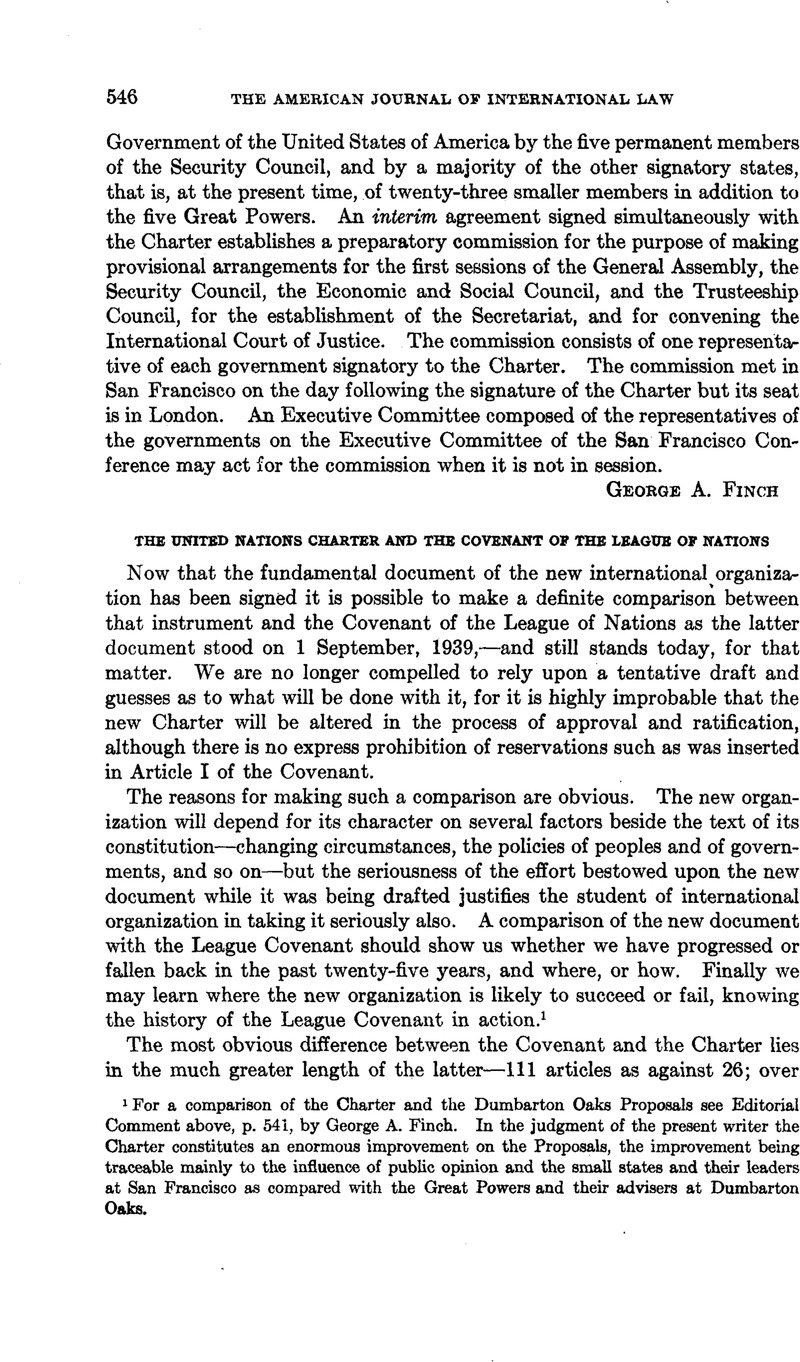No CrossRef data available.
Published online by Cambridge University Press: 25 April 2017

1 For a comparison of the Charter and the Dumbarton Oaks Proposals see Editorial Comment above, p. 541, by George A. Finch. In the judgment of the present writer the Charter constitutes an enormous improvement on the Proposals, the improvement being traceable mainly to the influence of public opinion and the small states and their leaders at San Francisco as compared with the Great Powers and their advisers at Dumbarton Oaks.
2 Arts. 73, 76.
3 Art. 11, par. 4; Art. 16; Art. 24, par. 2, etc., etc.
4 See article by the present writer on this problem in the Journal of Comparative Legislation, Vol. XVII, Part I (February, 1935), at p. 260, and the very wise if brief treatment of the problem in Kelsen, H., Peace Through Law, 1944, pp. viii-ix.
5 See paper by present writer, “The League, A League, or What?” in McCormick, T.C.T., ed., Problems of the Post-War World, 1945, Chap. XIII.
6 League document A.23.1939.
7 Art. 100, par. 2; Art. 101, par. 3.
8 Arts. 57-59, 63.
9 Art. 71.
10 Art. 55C. See also the repeated condemnation of any discrimination on grounds of “race, sex, language, or religion” (Arts. 1, 13, 55, 76, etc.).
11 Arts. 73-91.
12 Arts. 73C, 76A, etc.
13 Arts. 86C, 87C.
14 Arts. 11, 14, 34.
15 Arts. 33-38.
16 See the exception in Art. 94, par. 2, for those cases which reach the International Court of Justice.
17 Preamble, Art. 13, etc.
18 Art. 109.
19 Compare Art. 2 (7) of the Charter with Art. 15 (8) of the Covenant.
20 Art. 2, par. 6.
21 Art. 92.
22 Arts. 102-103.
23 Art. 111.